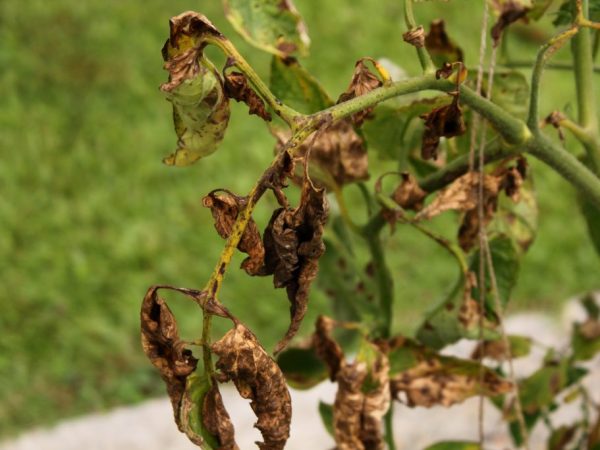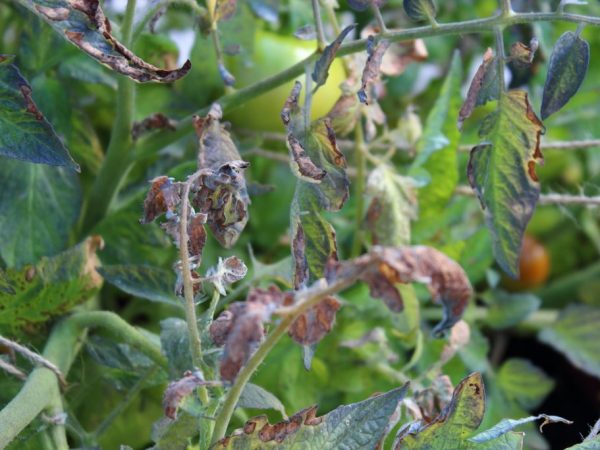How to deal with freezing of tomato seedlings
If tomato seedlings are frozen, it is necessary to find out what caused it. Let's consider how to fix the problem and how to prevent it from appearing in the future.

How to deal with freezing of tomato seedlings
Freezing reasons
A correctly selected variety of tomatoes, favorable conditions for growing seedlings and further planting in the ground are the key to a high level of yield.
For the northern regions, it is better to choose early or medium early varieties of tomatoes. Low-growing varieties of tomatoes and their hybrids withstand temperature extremes due to a well-developed root system.
The main reasons for freezing tomato seedlings can be:
- failure to comply with disembarkation dates;
- planting tomato bushes in too dense soil;
- insufficient amount of natural light;
- lack of any procedures for hardening seedlings;
- poor quality mulching or its complete absence, etc.
The minimum air temperature in the open air is 15 ° C, and the soil temperature is about 16 ° C. At temperatures below 10 ° C, the roots may not take root, freeze and rot.
Ways to save seedlings after freezing
It is necessary to plant tomatoes in open ground after the threat of frost has passed.
It is not necessary to dig up seedlings at the first symptoms of freezing of tomatoes. Estimate how much the tomato seedlings are frozen. If you think about the problem that has arisen, the chances of saving the plant are high.
With mild frosts
If the air temperature drops to -2-3 ° C, there is a risk of freezing of seedlings. Then it should be urgently reanimated.
Tomatoes should be watered (preferably with lake, river or well water) in a volume of 5 liters. Sprinkle each bush liberally, leaving water droplets to soak along the entire length of the seedlings. Watering is mandatory before sunrise. After - wait 3-4 days. If the frost hits hard and hard, the seedlings do not survive and die.
An arc-shaped structure should be erected over the beds as soon as possible. It is covered with dense polyethylene in 2 layers. If there is unnecessary rags, pieces of cardboard, old blankets, they hang the entire length of the shelter with them until warm days.
Tatiana Orlova (Candidate of Agricultural Sciences):
Tomato is a thermophilic culture. He does not tolerate not only frosts down to - 2-3 degrees, but dies already at zero degrees. Therefore, it is impossible to reanimate tomato seedlings that have been in for several hours with a frost of -2-3 degrees.
With severe frostbite
Tomato bushes not rescued in time are subject to even more frosting. In such cases, cardinal methods are used.
An effective drug is Epin. It should be applied when the leaves are on the seedlings:
- turn black;
- dry out;
- crumble;
- turn white;
- curl up.
Treatment methods
Immunomodulators

Plants can be saved
"Epin" is a biostimulant that strengthens the plant's immunity. It is used strictly in accordance with the instructions. Add 1 ampoule of solution to 5 liters of liquid. The mixture is stirred and poured in 0.5 tsp.tablespoons of citric acid for oxidation. The resulting solution is used early in the morning and late in the evening, due to the composition of the drug. Moistening of the soil is not stopped. The cured plant will move away and continue to grow.
Pruning
Often, cardinal pruning helps to restore the growth of seedlings and save the future harvest. With a sharp tool, the frozen part of the leaves or stem is cut off to ground level and the degree of frost damage is assessed. Top dressing is supplemented with good fertilizer, they wait 3-4 days.
Warming with bonfires
It may be that due to frost, a large number of bushes or a whole vegetable garden were immediately picked up. If it is an open area, appropriate measures should be taken to save the entire crop. Fire is kindled from dry weeds or manure, the smoke of which envelops the seedlings, warming them, protecting them from deep frost.
Tatiana Orlova (Candidate of Agricultural Sciences):
The drop in temperature to negative values during frosts occurs at sunrise. It is then that you need to ignite the smoke heaps. The smoke heap should be composed of several layers. Dry combustible material is laid down: branches, straw, on top they are covered with a thick layer of raw material: grass, manure. For a heap to burn for a long time, its volume must be large, the height of the heap is about 1 m.
Installation of heaters
If the seedlings are frozen in the greenhouse, the use of ground heaters is allowed. Thermal disc heaters are an alternative. Their main advantage is that they warm the earth well.
Tatiana Orlova (Candidate of Agricultural Sciences):
Electric heaters are an emergency heating method. But they are turned on not after the seedlings are frozen, but so that they do not freeze.
If, after the recommendations were made, it was not possible to save the plant, the dead seedlings are dug up and, following the retreat of frosts, the seedlings are re-planted. By this time, the land should be prepared, warmed up, and the seedlings should have grown. It doesn't matter if the harvest is a little late, but ripe and healthy.
Prophylaxis
It is recommended to carry out activities aimed at saving and preserving the future harvest. They provide resistance to possible trouble and save the entire crop.
Preventive measures:
- Using a metal container without a base, make a hole. Biofuel is placed at the bottom. It can be straw, weeds, manure, peat. This process is called self-heating. In the process of decay, the mixture will warm the root system and all plants. This method will help withstand frosts, save the root system from lowering the air temperature.
- A layer of roofing material is spread right on the bushes. The material protects from cold and wind, accumulates heat and moisture during the day, then nourishes the plant with it at night.
- Small trenches are dug between the beds. They are filled with degradable material. During decomposition, it gives off heat to the seedlings. This process takes on average 2 months, so the risk of freezing tomato bushes is very low.
- Having collected the dried inter-bed litter in the form of mowed grass and fallen leaves, you can sprinkle the whole plant with it. This will create a thick layer of mulch, which will also help you forget about the problem of freezing tomato seedlings.
Tatiana Orlova (Candidate of Agricultural Sciences):
The most affordable way to protect heat-loving plants from a cold snap is to have at hand devices for creating the most primitive protected ground: arcs and non-woven material. Arcs can be made by yourself from thick wire or you can buy ready-made ones. White non-woven fabric is sold in different brands: 17, 30.60. These numbers indicate the weight of 1 square meter of such material. For example, Agrospan 17 is the lightest and thinnest material, one square meter weighs 17 grams. But the best protection against severe frosts is non-woven material of grade 60. Tomato plants underneath can withstand frosts down to -3 degrees.
Do not plant seedlings too deep into poorly heated soil. It is allowed to add hot water to each well.
Another important procedure is hardening. It should be carried out when the first 2-3 leaves appear on the seedlings.
Conclusion
Tomato seedlings often do not withstand the cold test if they are not cared for properly. To prevent this, you need to remember that she is afraid of low temperatures and carefully take care of the soil and vegetable bushes.



